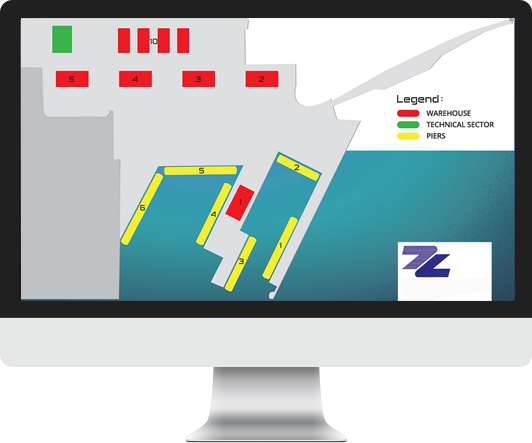ADDITIONAL INFORMATIONS
Latitude: 44° 07′ N
Longitude: 15° 14′ E
British Admirality Chart: 2775
Admiralty Pilot: 47
Time Zone: GMT + 1 h
Locode: HR ZAD
PORT OF ZADAR ANCHORAGE
About 0,5 mile. 245° from green port light on the North part of Zadar peninsula, depth 27 – 37 m.
Separate anchorage for tankers carrying dangerous cargo in area limited by points:
a) 44° 07’2 N ; 15° 09’4 E
b) 44° 07’8 N ; 15° 10’4 E
c) 44° 08’6 N ; 15° 09’4 E
d) 44° 08’0 N ; 15° 08’4 E
ZADAR PORT PILOTAGE
Compulsory for all vessels over 500 GT (yachts over 1000 GT).
Pilot board approaching vessels at anchorage, about 5 cables W of the green light at the W entrance point to Zadar old port, or at the separate anchorage for tankers carrying dangerous cargo. Pilot is on VHF channel 12/16.
COASTAL PILOTAGE
Is compulsory for tankers carrying dangerous liquid chemicals and gas. When calling Zadar coastal pilot boards/leaves the vessel at the following position: 44°23’3 N – 14°34’5 E (near Grujica lighthouse) The ship’s agent must advise the Harbor Master in due time regarding the ETA as well as the ETS. In this respect it is requested 24-hours ETA at pilot position, then corrected ETA 12-hours before vessel’s arrival at pilot position.
Rijeka Radio – Call sign 9AR, Split Radio 9AS. VHF CH 16/10.
TIDES/CURRENTS/WINDS
The tide is mainly diurnal and rises up to 0.65 m (2′); however, the water level is much affected by weather conditions. During February-April the sea level may fall 0.5 m below normal. Currents are negligible. When entering the new basin at Gazenica, S and NW winds could affect navigation.

